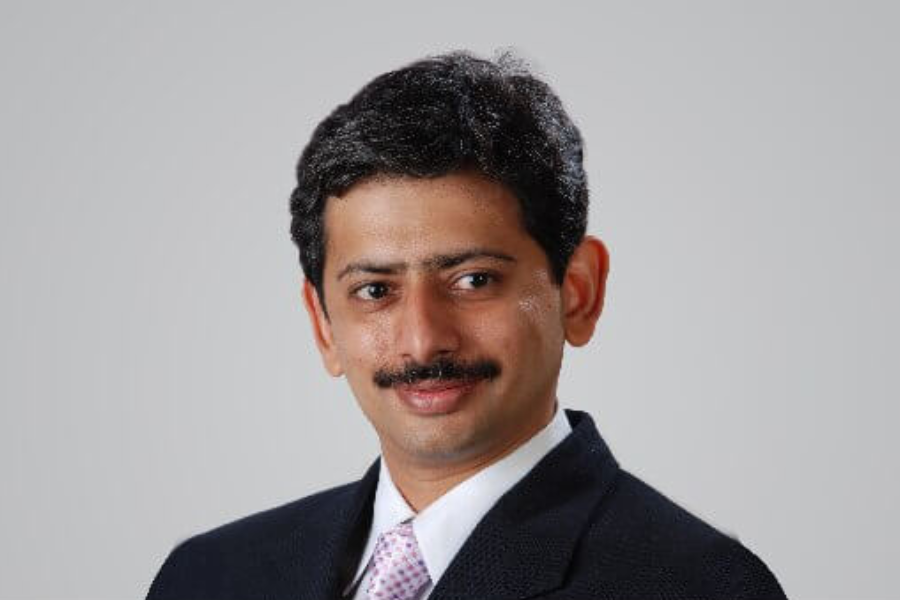Elevating solar horizons: The untapped potential of floating tech
In the latest instalment of our “Green Guardians” series, IBT welcomes Sachin Rele, a luminary in the solar energy sector, with a profound journey spanning over three decades. As the Managing Director and CEO of Autonic Energy Systems, Mr. Rele shares insights into his initiation into solar energy in 1994.
Reflecting on the industry’s transformation since then, he highlights the astronomical cost fluctuations of solar modules and the paradigm shift from off-grid to rooftop installations and the vast scope when it comes to floating solar platforms. He opines that the solar sector presents an opportunity exceeding US$ 100 billion.
While he appreciates the government’s efforts for the solar sector, Mr Rele also emphasises the challenges due to differing energy policies at the state level, which need to be resolved.

Image Source: Pexels
IBT: What inspired you to establish Autonic Energy Systems and how has the company advanced to industry changes since its inception?
Sachin Rele: Establishing Autonic in 1994, my initial concentration was on energy solutions, primarily in batteries and storage. Shifting towards alternative energy in 2005, I encountered the high cost of solar modules, purchased initially at Rs375 per watt peak. The subsequent years brought about a notable industry transformation, witnessing a nearly 90% reduction in current module costs. My fascination with solar energy originated from viewing sunlight as akin to spilt petrol on the road, sparking my quest to harness power from this abundant resource. Early projects included off-grid solar solutions, notably for ATMs in 2012, marking Induslnd Bank as a pioneer in solar ATM solutions. A 2009 project featured a unique trigger and timer-based system with remote monitoring capabilities. Further endeavours involved innovative solar applications for cold chains, prioritizing genuine environmental impact over cost considerations. Since then, my predominant focus has been on solar rooftop installations.
IBT: Solar rooftops, ground-mounted power plants and floating solar are your key specializations. What unique challenges and innovations have you encountered while implementing these different solar solutions?
Sachin Rele: Addressing your three-in-one query, rooftop solar requires a holistic approach, considering the entire building ecosystem. Solar, being a multidisciplinary subject, demands a broad knowledge base. Proficiency in electrical engineering, mechanical engineering, electronic and telecommunication, metallurgy, and civil engineering, to a certain extent, is essential. It’s more about need-to-know fundamentals than exhaustive details, comparable to understanding how to build a stable structure capable of withstanding 150 km/hour wind speed without needing to know the intricacies of dam construction. In the realm of electricals, extracting power from the system is just one facet; the critical aspect lies in implementing the technology effectively. Drawing a parallel, having the world’s best harmonium or piano doesn’t make one an expert player. Similarly, purchasing top-notch materials for solar without the ability to design and engineer the system renders it useless. In today’s solar landscape, products and solutions are often commoditized, emphasizing commercial aspects like cost, akin to the ”mileage kitna deti hai” ad. Returning to the core question, rooftop solar presents unique challenges. Design engineering plays a pivotal role, exemplified by our two-megawatt project in Germany for a German EPC. Our strength lies in comprehensive design and engineering, exemplified by a nine-and-a-half-year-old solar project at Mercedes Benz with zero downtime. Engineering and design emphasis has been pivotal in the success of over 250 installations, ensuring trouble-free and efficient operations. Emphasizing engineering and design is imperative for the longevity of solar projects.
IBT: Could you discuss any cutting-edge technologies or innovations that Autonic has adopted or is exploring to enhance the efficiency and performance of solar installations?
Sachin Rele: Currently, there are three major initiatives underway. Firstly, we’ve entered into a strategic collaboration with a Spanish company to introduce floating solar technology in India. We are actively seeking investments for this transformative project, with plans to initiate float manufacturing in India, which holds the potential to be a game-changer in the industry. While securing initial investors can be challenging, we are patiently waiting for the right opportunity to propel this venture forward. The second facet of our approach centers around a strong emphasis on design. We proactively identify potential failure points in components, opting to re-engineer and over-engineer them for enhanced resilience. Lastly, we have developed our proprietary dashboard to monitor system performance and generation metrics. Acknowledging that perfection is elusive, our commitment lies in a continuous evolutionary process. The guiding principle is encapsulated in the word ‘better’—a pursuit to continually improve and refine our systems, acknowledging that perfection is an ongoing journey rather than a destination.
IBT: India has an abundance of sunlight, and it experiences varying levels of sunlight throughout the year. How does Autonic address the challenges of optimizing solar power generation in different regions of our country?
Sachin Rele: This is a crucial question, and I appreciate your attention to it. Let me recount an experience from our projects in Germany to illustrate its significance. In Germany, the mandate was clear: every square inch of the roof should harness solar energy, irrespective of its orientation—east, west, north, or any direction. The emphasis was on maximizing energy generation and avoiding any missed opportunities. Contrasting this with India, where our geographical location provides abundant sunlight from the equator to the Tropic of Cancer, we adopted a similar approach. We convinced our clients that even with a certain percentage of performance drop due to shadows on the system, the overall benefits outweigh the losses. To illustrate the point, consider an example from the early 2000s when Prince Charles installed solar water heating at Buckingham Palace. During a press conference, concerns were raised about the four to five months of winter with little sun. Prince Charles astutely responded that he has eight months of sunlight, questioning the focus on the challenging months. The essence lies in not just greenwashing but in harnessing every available inch of sunlight, treating it as a valuable resource, much like the petrol that is wasted when sunlight falls on the street, waiting to be harnessed.
IBT: Floating solar platforms are gaining quite a popularity due to land scarcity. So what are the key advantages and considerations when implementing floating solar projects in India? Also, can you share an example of a successful project in this category?
Sachin Rele: Let me provide a comprehensive overview of floating solar, drawing insights from a TERI report, often referred to as the third pillar of solar. TERI’s assessment delves into the extensive potential of floating solar across water bodies in India. Remarkably, India boasts 18,000 square kilometers of such water bodies, excluding rivers—these include reservoirs in cities like Delhi and Mumbai, backwaters, and other significant water reserves. Even considering just 10% of these water bodies, India could generate a staggering 288 gigawatts of solar power. This information is not my own; it’s derived from TERI’s well-researched report, for which I express my gratitude. The magnitude of this opportunity indicates that where there is potential, technology follows suit. Floating solar presents promising technological opportunities, and I encourage entrepreneurs, researchers, and manufacturers to explore and leverage the vast scope available within this domain. If needed, I am more than willing to dedicate a special session, elaborating on floating solar for 45 minutes.
IBT: What suggestions would you want to provide to policymakers to further lift the solar sector and any advice for young entrepreneurs?
Sachin Rele: The Government of India is actively engaged in initiatives for the solar sector, surpassing expectations. I express my gratitude for their efforts. However, an inherent challenge lies in the fact that power regulation is a state subject, resulting in diverse policies and rules across states. To streamline this, the introduction of a codified solar law would greatly benefit the industry. Another crucial aspect is the establishment of a standardized platform where all energy generation data from various systems can be documented in a unified manner. This open-access platform would facilitate learning and assessment for all stakeholders.
In the current landscape, the solar sector presents an opportunity exceeding $100 billion. Beyond the financial aspect, it’s essential to recognize that solar is a multidisciplinary subject, requiring diverse skills. There are ample opportunities to either initiate independent ventures or collaborate within the solar domain. My strong recommendation is for individuals to gain hands-on experience. Even with years of experience, I often encounter situations where I admit not knowing something. Acknowledging this is crucial for the continuous learning process. Invest your time judiciously, and collaborate with established companies to accumulate experience, and after a decade or so, you will find yourself well-equipped to navigate the dynamic landscape of the solar industry.
Sachin Rele is the Managing Director and Chief Executive Officer of Autonic Power Systems. He is a promoter director of the company and has overall responsibility for the engineering, floating solar and retail business. The company is among the oldest solar companies in India. He comes with a passion for creating a world-class organization and transforming it into a professionally managed company. Sachin has over 30 years of hardcore experience in power-electronic, energy storage and solar.













Leave a comment